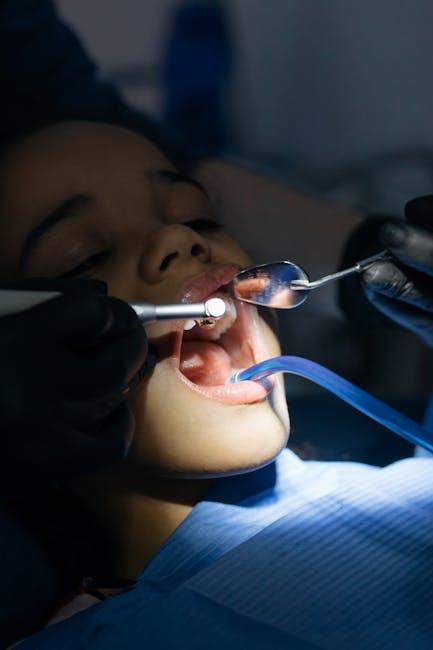1 in 3 Kids Has Dental Problems, Poll Finds
Insights from U.S. News & World Report on the rising dental issues concerning children across the United States.
Introduction
Dental health is a cornerstone of overall well-being, especially for children. However, a recent nationwide poll conducted by U.S. News & World Report reveals a concerning trend: 1 in 3 kids has dental problems. This alarming statistic highlights the urgent need for parents, caregivers, and health professionals to pay closer attention to children’s oral health. From cavities to gum disease, dental issues can significantly affect a child’s comfort, self-esteem, and development.
In this article, we will dive into the causes behind this epidemic, explore key prevention strategies, discuss treatment options, and provide helpful tips to keep your child’s smile shining bright.
Understanding the Prevalence of Dental Problems in Kids
The poll, which surveyed thousands of parents and healthcare providers, found that approximately 33% of American children are facing various dental issues. The most common problems include:
- Tooth decay (cavities) – The most widespread dental disease among children.
- Gum disease (gingivitis) – Early stage of gum infection causing inflammation.
- Tooth sensitivity and enamel erosion – Often caused by diet and poor dental habits.
- Malocclusion or misaligned teeth – Leading to bite problems.
These conditions, if left untreated, can result in pain, difficulty eating, and even impact speech development.
Why Are Dental Problems So Common in Kids?
Several factors contribute to why children in the U.S. are vulnerable to dental problems, including:
1. Poor Oral Hygiene Practices
Many kids do not brush or floss regularly, or do so ineffectively, allowing plaque buildup that leads to cavities and gum disease.
2. Unhealthy Diets
High consumption of sugary snacks, sodas, and processed foods contributes to enamel weakening and tooth decay.
3. Limited Access to Dental Care
Socioeconomic factors prevent some families from visiting dentists regularly for checkups and cleanings.
4. Lack of Awareness
Some parents and caregivers underestimate the importance of early dental care or fail to model good habits.
Benefits of Early Dental Care for Children
Investing in your child’s oral health early on has numerous benefits:
- Prevents cavities and reduces the risk of future dental problems.
- Promotes healthy jaw growth and proper teeth alignment.
- Builds lifelong habits that promote overall wellness.
- Boosts self-confidence by maintaining a bright, healthy smile.
- Reduces dental treatment costs in the long run.
Practical Tips to Prevent Dental Problems in Kids
Parents and caregivers can take simple, effective steps to help children maintain optimal oral health:
- Encourage Brushing and Flossing: Have children brush at least twice a day with fluoride toothpaste and floss daily.
- Regular Dental Checkups: Schedule dental visits at least twice a year starting from the eruption of the first tooth.
- Healthy Eating Habits: Limit sugary snacks and drinks; promote a balanced diet rich in fruits, vegetables, and calcium.
- Use Fluoride Treatments: Consult your dentist about fluoride varnishes or rinses to strengthen enamel.
- Lead by Example: Show children your own good dental hygiene practices.
Treatment Options for Common Dental Problems in Children
If your child has dental problems, here is an overview of common treatment options available:
| Dental Issue | Treatment | Notes |
|---|---|---|
| Tooth Decay (Cavities) | Fillings, crowns, fluoride treatments | Early detection prevents further damage |
| Gum Disease | Professional cleaning, improved oral hygiene | Can be reversible if caught early |
| Malocclusion (Misaligned Teeth) | Orthodontic braces or aligners | Treatment often starts in pre-teen years |
| Enamel Erosion | Dietary changes, fluoride, sealants | Prevent progression with lifestyle changes |
Case Study: The Impact of Improved Dental Care for Mia, Age 7
Mia, a 7-year-old from Ohio, was recently diagnosed with multiple cavities and early gum inflammation due to irregular brushing and frequent soda consumption.
After working with a pediatric dentist, Mia’s family adopted a structured oral care routine, cut back on sugary treats, and attended follow-up dental visits every three months. Within six months, Mia’s dental health markedly improved — no new cavities were detected, and gum inflammation resolved.
This case highlights the power of education and prevention to reverse early dental problems in children.
First-Hand Experience: Parenting & Dental Health
As a parent, I noticed how challenging it was to make my kids brush regularly until we made it fun. We started using colorful timers, picking their favorite flavored fluoride toothpaste, and rewarding consistent brushing with small incentives.
Visiting the dentist every six months also kept us motivated. Today, my children understand the importance of dental care and even remind me when it’s time to floss!
Conclusion
The poll revealing that 1 in 3 kids in the U.S. suffers from dental problems is a wake-up call about the state of children’s oral health nationwide. But the good news is, most pediatric dental issues are preventable and manageable with proper care, education, and early intervention.
Parents, caregivers, and health professionals play a vital role in fostering healthy habits to protect children’s smiles. By adopting regular dental checkups, encouraging good oral hygiene, minimizing sugary intake, and seeking timely treatments, we can stem the tide of children’s dental problems and help every child enjoy a lifetime of healthy teeth and confident smiles.


